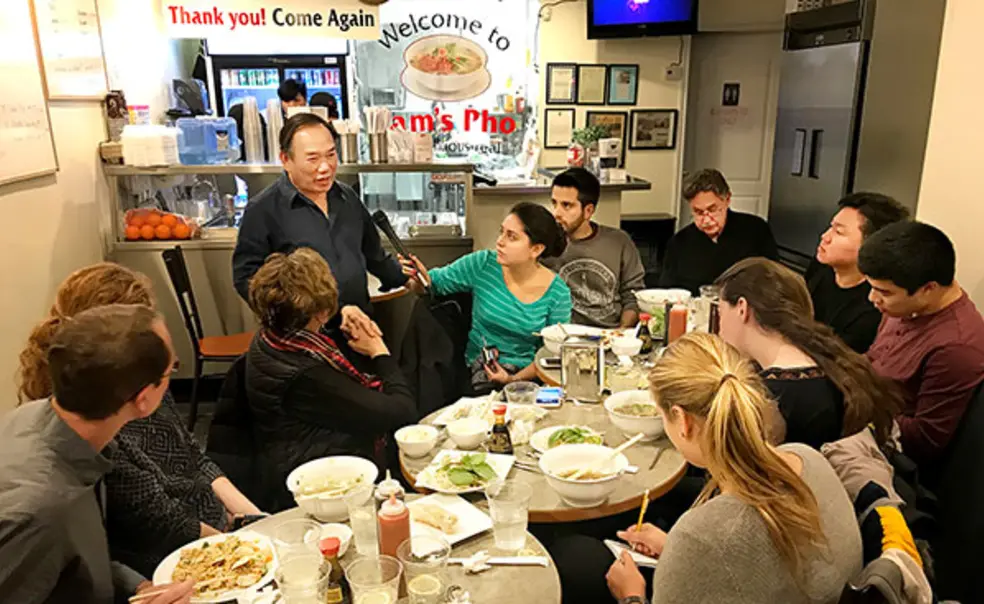Eight undergraduates and a graduate student took part in a fall-break trip to Winnipeg, Manitoba, as part of a journalism seminar on reporting about migration. Nicholas Wu ’18, one of the students, reports on the class.
The global migration crisis often conjures visions of the U.S.-Mexico border or refugees in Greece, but students in a course on international news reporting spent their fall break in a colder place: the Canadian city of Winnipeg, Manitoba.
Providing extensive resources to immigrants and refugees, Winnipeg has become a global leader in refugee resettlement; immigrants now make up 23.9 percent of the city’s population.
“It’s the best place to look at all the aspects of Canada’s immigration policy,” said NPR reporter Deborah Amos, a Ferris professor of journalism who designed the course and led the trip. “It’s a day trip to see it all,” she said, referring to visits by the class to the small towns of Altona — where the Mennonite community had resettled 45 Syrians, amounting to 1 percent of the town’s population — and Gretna, “to see the path asylum-seekers take from the U.S. to Canada.”
Students interviewed NGO workers, government officials, and refugees throughout Manitoba, a province north of Minnesota and North Dakota. The class also visited groups like Diversity Food Services —– which has hired a workforce primarily of refugees and others with disadvantaged backgrounds — as well as the Manitoba Interfaith Immigration Council, the largest refugee-resettlement agency in the province.
“I was surprised and heartened that the majority of the refugees I met — even the LGBT refugees — loved Canada, and thought they were safe and welcomed there,” said Matt June Ik Chang ’19.
“To those fleeing persecution, terror & war, Canadians will welcome you, regardless of your faith,” Prime Minister Justin Trudeau tweeted Jan. 28.
Canada resettled more than 46,000 refugees last year, the most since 1980. In fiscal year 2016, the U.S. resettlement cap was 110,000, though only about half that number were admitted. The Trump administration reduced the quota to 45,000 for the current fiscal year.
The students met with refugees like Yahya Samatar, who fled Somalia after being threatened by al-Shabab. He crossed through 11 countries, including the United States, before swimming across the Red River and entering Canada. “I didn’t know where I was coming from, where I was going to,” Samatar told the class. “This was the only chance I had, so I left everything I had on the side of the river and jumped in.”
Maddy Pauchet ’18 was impressed by the pride that Manitobans take in their identity: “They’re not us, and they’re going to prove it. Everyone we met, from policymakers to museum curators, celebrated their Canadian identity and their government’s push to welcome refugees.”
To read student blog entries filed during the trip, go to: http://commons.princeton.edu/manitoba-migration/.












No responses yet